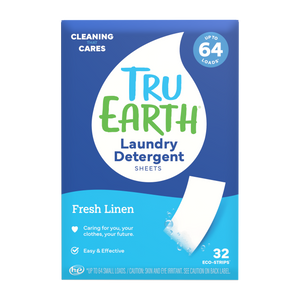It’s safe to say that most clothing stains are the result of food spills. Whether in the car, in the kitchen, on the move, or simply while distracted, it’s something of a miracle to escape a work or school day without wearing a bit of what you’ve eaten. Unlike other, more abrupt and obvious stains, the challenge with oil-based marks is that sometimes you won’t even notice them until you’ve run them through the laundry. Why is that a problem? The golden rule of stain removal is treating immediately, before washing and drying. But fear not, as a mom to three young kids who makes something of a hobby of re-selling the clothing they've outgrown, I have had plenty of practice treating oily stains. Here’s my best advice for treating spills – even long after they’ve set.
Which types of foods create oily stains?
When we refer to oily food stains, typically what we’re seeing is the residue that cooking oils (like olive, vegetable and nut) leave behind. These ingredients show up in things like sauces, marinades, salad dressings/vinaigrettes, dips, meat and vegetables that have been roasted or pan-fried with oil, deep-fried entrées and snacks, like chips, crackers and pastries.
Note: this stain removal guide is not for oily stains created from butter, grease, lard, animal fats, oil-based paint or motor oil.
What you'll need to treat oil-based stains:
- Laundry detergent (recommended: Tru Earth) and/or:
- Dish soap
- Paper towel or baking soda
How to remove oil-based food stains in 8 easy steps
Step 1: Identify the fabric type. Inspect the garment care label to note the delicacy of the textile. For example, silk has special considerations for stain removal.
Step 2: Blot the oil mark with a clean, absorbent paper product like a paper towel or napkin. Take exceptional care not to rub the oil deeper into the fiber of the textile or accidently transfer it onto another part of the garment. Alternatively, cover with baking soda, gently pressing it into the stain and leaving it to sit for 20 minutes. The powder will absorb the moisture, helping to draw the oil from the fabric.
Step 3: Pre-treat the stain with a concentrate of Tru Earth. First, tear a strip into small pieces and place in a shallow bowl. Add two teaspoons (10ml) of tap-hot water to begin dissolving it. Stir with a spoon to form a paste, adding small volumes of water as needed. Smear the concentrate atop the stain, gently pressing the mixture into it. Allow the concentrate to sit for 10-15 minutes.
Alternatively, it's commonly suggested that a squirt of dish soap can be used to pre-treat an oil-based food stain. You can apply it in the exact same method but fun fact: Tru Earth boasts the same grease-busting surfactant ingredient that popular dish soaps contain, so why not just keep it all zero waste?
Step 4: Rinse with cold water.
Step 5: (Optional) Repeat the application of a liquid dish soap spot treatment, if needed. Note: once wet, it might not be easy to distinguish the stain from the water. In this case, simply go ahead with the next step.
Step 6: It’s time to wash. If the item is typically laundered in the washing machine, run the item through a cycle with Tru Earth laundry eco-strips. Alternatively, if the garment is made from a specialty material, refer to the instructions outlined on the garment care label.
Step 7: Hang-dry the item instead of placing it in the dryer. Heat from the dryer will only set a stain deeper into the textile; hang-drying gives you the chance to treat again with dish soap, if needed.
Step 8: Inspect the garment. If the stain persists, revisit step 5 and launder again.

